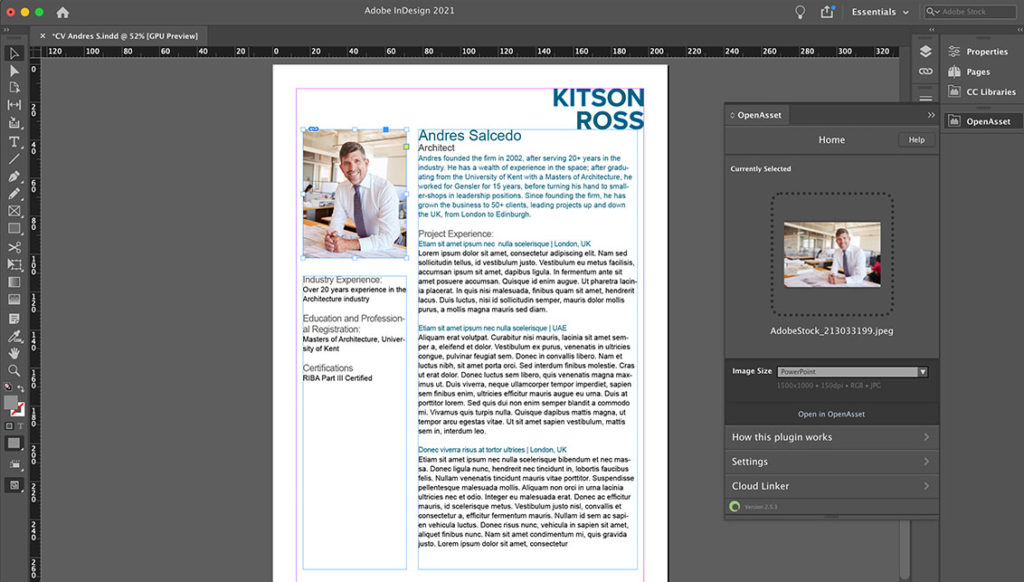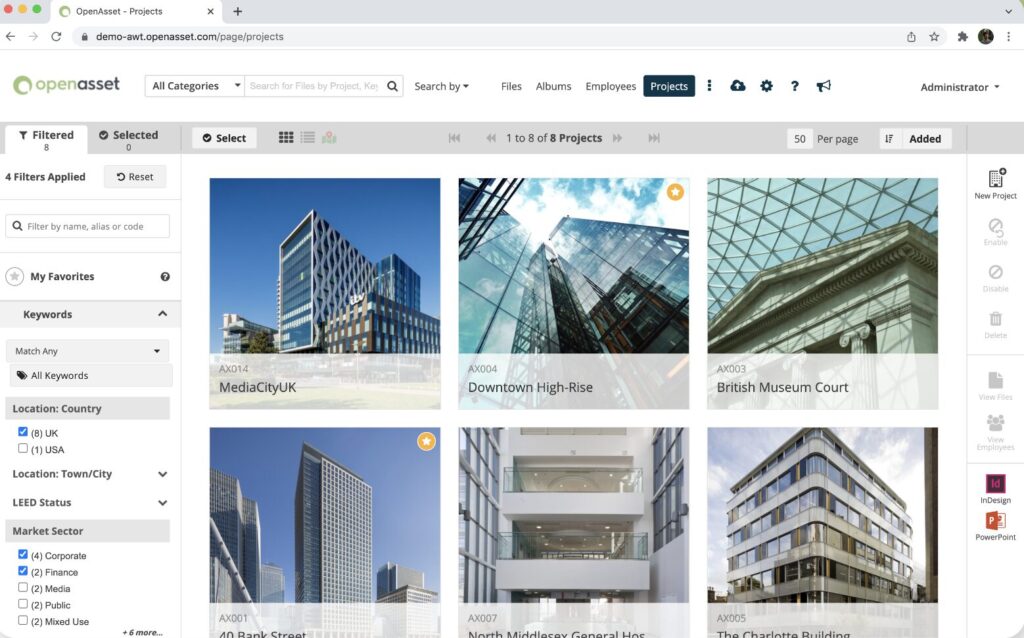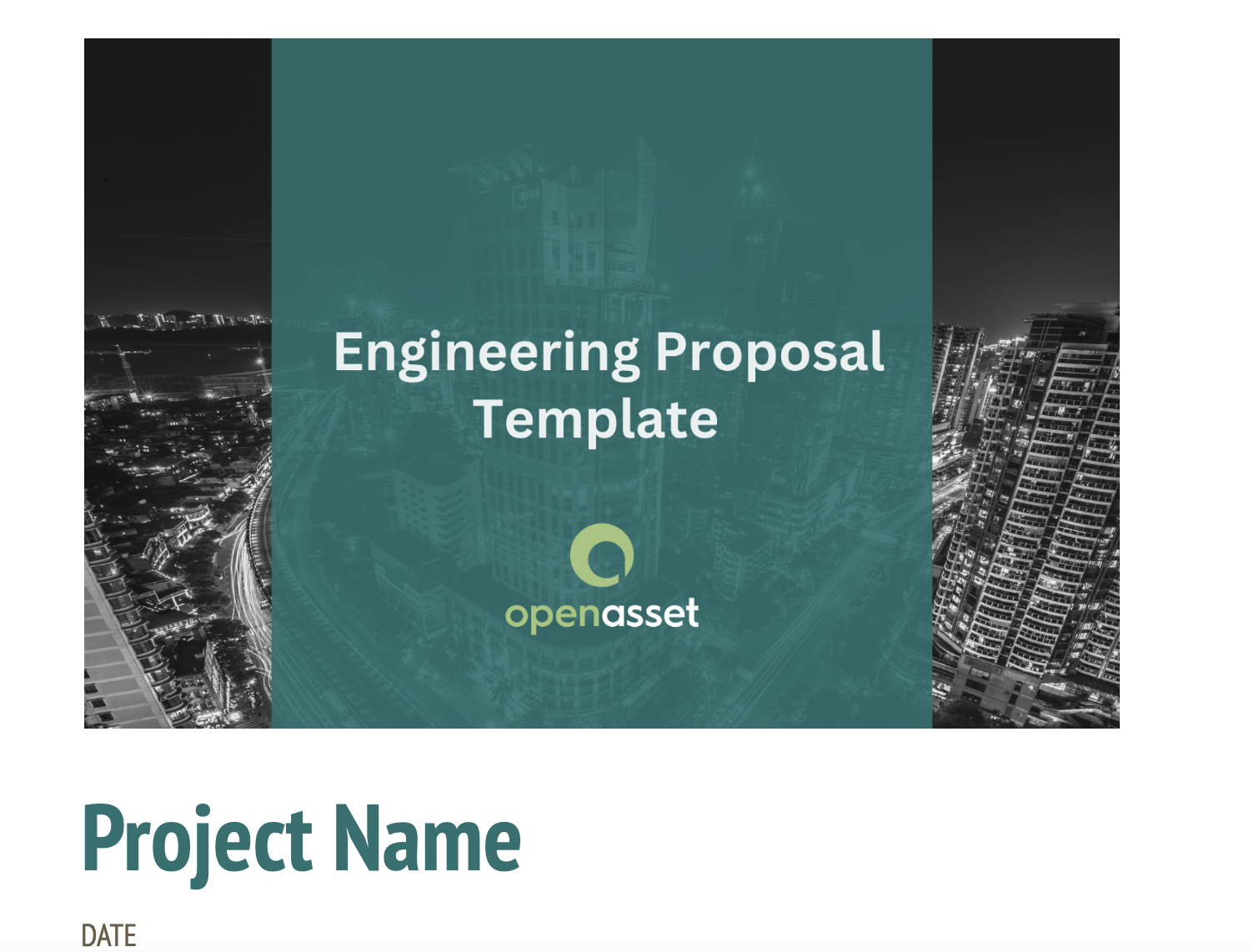Crafting a civil engineering proposal can be an overwhelming task, given its critical role in securing projects and laying the groundwork for successful project execution. However, if you know how to write a civil engineering proposal and implement the right software, creating a winning RFP response becomes efficient and easy.
In this blog, we teach you the essentials of writing a compelling and comprehensive proposal that stands out to clients. We also highlight the importance of why proposal software isn’t just an option, but a necessity.
Plus, to give you an edge, we’ve compiled seven professional tips that go beyond the basics—strategies that seasoned professionals use to elevate their proposals from good to exceptional.
Why Are Civil Engineering Proposals Important?
Civil engineering proposals are essential for participating in the bidding process for new projects. They provide a detailed plan of the project’s scope, methodology, and costs, which helps potential clients evaluate the feasibility and efficiency of the team undertaking the project.
Ultimately, crafting a winning civil engineering proposal can help you win more business and help your AEC firm grow. In fact, RFP-influenced revenue rose 6% between 2022 and 2023.
What Should Be Included in a Civil Engineering Project Proposal?
Creating a civil engineering project proposal requires a structured approach to ensure all necessary details are covered comprehensively. Here’s what should be included in such a proposal:
Executive Summary
The executive summary serves as the proposal’s forefront, offering a concise overview of the project at hand. It should articulate the project’s purpose, its overarching goals, and the significant benefits it aims to deliver.
This section should act as the proposal introduction. Therefore, it should have a compelling hook, designed to capture the interest of the reader by highlighting the proposal’s relevance and the unique value proposition of the engineering team.
It sets the stage for the detailed exposition that follows, ensuring that the reader understands the proposal’s importance and the transformative potential of the project.
Define the Project Scope
Defining the project scope involves describing the boundaries of the project, outlining what will be accomplished, and what will fall outside the project’s scope. This section should address the identified needs or problems the project aims to solve, providing a clear picture of the expected outcomes.
By detailing the project’s scope, the proposal ensures that all stakeholders have a shared understanding of the project’s limits and possibilities, helping manage expectations and focus efforts on the agreed-upon goals.
Set a Budget
Setting a budget is crucial for outlining the financial plan of the project. This section should include a detailed breakdown of all estimated costs, including:
- Labor
- Materials
- Equipment
- Any contingencies
It is important to justify each cost element, showing how the allocated funds will contribute to the project’s objectives. A well-justified budget not only demonstrates the proposal’s financial feasibility but also reflects the team’s thorough planning and understanding of the project’s financial requirements.
Determine a Timeline
A detailed timeline is essential for demonstrating the project’s schedule and milestones. This section should map out the phases of the project, from start to finish, with start and end dates for each critical task.
It should also highlight key milestones and their significance to the project’s overall timeline. A clear, well-structured timeline ensures that all stakeholders have realistic expectations about the project’s duration and can plan accordingly.
Moreover, a timeline illustrates the team’s commitment to meeting deadlines and efficiently managing the project’s progression.
Follow the Project Plan and Requirements
The project plan is a comprehensive section that lays out the specific objectives, requirements, and deliverables of the project. It should detail the technical and operational strategies to be used, the criteria for success, and how the project aligns with the client’s objectives.
This portion of the proposal demonstrates the team’s approach to achieving the project’s goals, outlining the methodologies, technologies, and standards that will be applied. It’s where the engineering team’s expertise and innovative solutions are showcased, providing confidence in their ability to deliver the project successfully.
Create a Compelling Project Proposal
With all the essential information and specifics at hand, the next step involves writing a compelling civil engineering proposal. Remember to articulate the goals, advantages, and projected timeline of the project with clarity, alongside outlining possible challenges and the approaches to solve them.
Moreover, highlight your proficiency and experience, drawing attention to your previous accomplishments to reinforce trust in your capability to achieve the desired outcomes.
7 Tips for a Civil Engineering Proposal That Wins Business
However, if you’re still unsure about how you can create a civil engineering proposal that wins more business, here are some tips you can follow to help you create your proposals with confidence:
1. Collaboration Between Civil Engineers and Marketers
Collaboration between civil engineers and marketers or proposal writers is crucial for crafting a winning proposal.
Why? Civil engineers bring technical expertise, ensuring the proposal is based on feasible engineering practices and solutions while marketers or proposal writers contribute by refining the message, emphasizing the benefits, and making the proposal appealing to a non-technical audience.
This team effort ensures the proposal is both appealing to the reader and explains the solution compellingly. This effectively communicates the project’s value proposition.
2. Select the Right Team Members
The success of a civil engineering project is largely dependent on the expertise, coordination, and collaboration of its project team.
Therefore, include a section that outlines the team responsible for bringing the project to life. Detail their roles, responsibilities, and qualifications in their employee RFP resumes to ensure the client you’ve selected the best employees with the right expertise for the project.
How can you avoid spending hours on this section while creating efficient employee resumes? With a Digital Asset Management (DAM) tool for engineering that has an Employee Module.

Your team’s resumes go beyond summaries of qualifications—they are powerful documents that highlight your team’s capabilities. OpenAsset, a DAM solution tailored for the AEC industry, makes the task of crafting optimal RFP resumes more efficient than before.
Using OpenAsset’s dedicated Employee Module, you’re not just building a resume; you’re creating a narrative. It allows you to showcase the depth of your team’s expertise, from the experienced architect with a portfolio of landmark projects to the innovative young engineer with groundbreaking ideas, emphasizing that every detail counts.
Moreover, the Employee Module enhances your organization’s productivity by streamlining the generation of resume documents and enabling seamless synchronization of employee information between OpenAsset and your CRM or ERP systems.
3. Create a Checklist
Creating a checklist of all required elements is a strategic approach to ensure your proposal is comprehensive and doesn’t miss anything critical. This checklist should include:
- Project objectives
- Scope of work
- Methodology
- Timeline
- Budget
- Qualifications of the project team
- Any client-specific requirements
This checklist helps in addressing each component, ensuring thoroughness and adherence to RFP requirements.
4. Double-Check Your Work
Having another set of eyes review your proposal can make a huge difference in the success of your proposal. This can be someone within your team or an external reviewer who can provide a fresh perspective.
They can catch errors, offer suggestions for improvement, and ensure that the proposal is clear and persuasive. This peer review process is crucial for enhancing the quality and effectiveness of your proposal.
5. Have Strong Communication With Your Team
Effective communication within your team about deadlines and workload distribution is essential for managing the proposal development process efficiently. Setting clear expectations and regular check-ins can help ensure that all components of the proposal are progressing as planned and that any challenges are addressed right away.
Additionally, this proactive communication builds teamwork and ensures that the proposal is completed on time and to a high standard.
6. Turn Your Weaknesses Into Your Strengths
Acknowledging and addressing your firm’s perceived weaknesses can actually enhance your proposal’s appeal. Instead of hiding them, strategically transform these aspects into strengths by demonstrating proactive measures and innovative solutions.
For example, if your firm lacks experience in a specific area, emphasize your fresh perspective, adaptability, and the cutting-edge techniques you bring to the table. Highlight partnerships with more experienced consultants or the specialized training your team has undertaken.
This approach shows potential clients that your firm is not only aware of its limitations but is also committed to growth, learning, and excellence, turning potential vulnerabilities into compelling reasons for selection.
7. Know When to Let Go of a Proposal
Recognizing when a project is not the right fit for your firm is crucial when it comes to any AEC proposal. Investing time and resources into bids with slim chances of success can drain your team’s energy and divert attention from more attainable opportunities.
Develop criteria for evaluating the feasibility and alignment of each RFP with your firm’s strengths, experience, and strategic goals. To do so, you can establish a go/no-go process to help you determine whether a business opportunity is worth the effort. If an RFP doesn’t align well, it might be wiser to pass and focus on opportunities where your firm can truly excel and deliver value.
Understanding when to let go frees up resources to concentrate on proposals that are not just winnable but also rewarding, allowing you to apply your efforts where they can make the most impact.
Software to Make Civil Engineering Proposals Easier
Implementing proposal software results in greater team satisfaction. However, that’s only one of the many advantages of using proposal software, like a DAM.
The primary advantages of using proposal software include enhanced proposal quality, improved accuracy in responses, and quicker response times to RFPs. That must be why, according to Webinarcare’s RFP statistics, 69% of organizations utilize such tools or software.
In fact, according to the same study, teams that use software have an average 45% proposal win rate. On the other hand, teams that do not utilize software for their RFP processes have an average win rate of 41%.
If you’re still not convinced of the importance of using specialized software for your civil engineering proposals, teams utilizing proposal software have an average annual influence on revenues of $405.2M, in contrast to those not using software, which influence $245.1M annually. This represents an average revenue increase of 65%.
Using DAM software, like OpenAsset, provides a streamlined approach to managing and utilizing digital assets such as images, documents, and project data. OpenAsset stands out as the top software solution designed to simplify the process of creating civil engineering proposals because it’s specifically tailored for the AEC industry.

This means it offers capabilities that are particularly beneficial in enhancing the efficiency and effectiveness of AEC proposal creation. To name a few of these capabilities, they include:
- A centralized repository
- Customizable templates
- An Employee Module
- Integration with AEC-specific tools
- Easy sharing and collaboration
FAQs: Responding to Civil Engineering RFPs
Here are some common FAQs to help you throughout your civil engineering proposal process:
Do Civil Engineers Write Proposal Responses?
Yes, civil engineers often write proposal responses, especially in firms where they play a pivotal role in project planning and execution. These professionals leverage their technical expertise and understanding of project requirements to craft detailed proposals that address the scope, methodology, and execution plan.
However, typically in larger organizations, a team that includes civil engineers along with the firm’s marketing team and a dedicated proposal writer/s may collaborate to prepare the response, ensuring that it has all the right content and meets the RFP’s requirements.
What’s the Best Way to Structure a Civil Engineering Proposal?
The best way to structure your civil engineering proposal is to include:
- An Executive Summary/ Introduction
- Project background
- Team qualifications
- Budget
- Timeline
- Detailed project plan
What Mistakes Should I Avoid in Civil Engineer Proposals?
Knowing what to do when crafting your civil engineering proposals is just as important as knowing what not to do. Some common mistakes to avoid include:
- Underestimating the importance of clarity and detail, particularly in explaining technical approaches and methodologies
- Overlooking the need to tailor the proposal to the specific client and their project
- Failing to justify the budget and timeline
- Not doing enough proofreading
- Failure to highlight the team’s qualifications and past successes
These mistakes can raise concerns about project feasibility and reliability and might undermine the proposal’s persuasiveness. Avoiding these pitfalls can significantly increase the chances of your proposal being successful.
Civil Engineering Proposal Example
At OpenAsset, our goal is to equip you with the tools necessary for achieving success. To support you on this path, we offer an engineering project proposal template that can be used for your civil engineering proposals. It’s designed to enhance your proposal crafting process.
Additionally, you can see an example of what a civil engineering proposal should look like below:

Create Successful Civil Engineering Proposals With OpenAsset
OpenAsset, a leading Digital Asset Management (DAM) solution designed specifically for the architecture, engineering, and construction industries, offers a robust platform that simplifies the proposal creation process, enabling you to produce compelling, comprehensive proposals with ease.
Implementing OpenAsset into your proposal development workflow gives you access to a suite of features that streamline the management of digital assets, automate document creation, and ensure your proposals are both visually appealing and rich in content.
This not only saves valuable time but also enhances the quality of your submissions, allowing your projects’ strengths and your team’s expertise to stand out.
Ultimately, OpenAsset’s DAM solution makes AEC proposals simpler, faster, and more successful. That’s why 99% of customers renew. With OpenAsset, your journey towards creating winning civil engineering proposals is just a few clicks away.
Ready to streamline your workflows?
[Closing CTA: Schedule a Demo]



